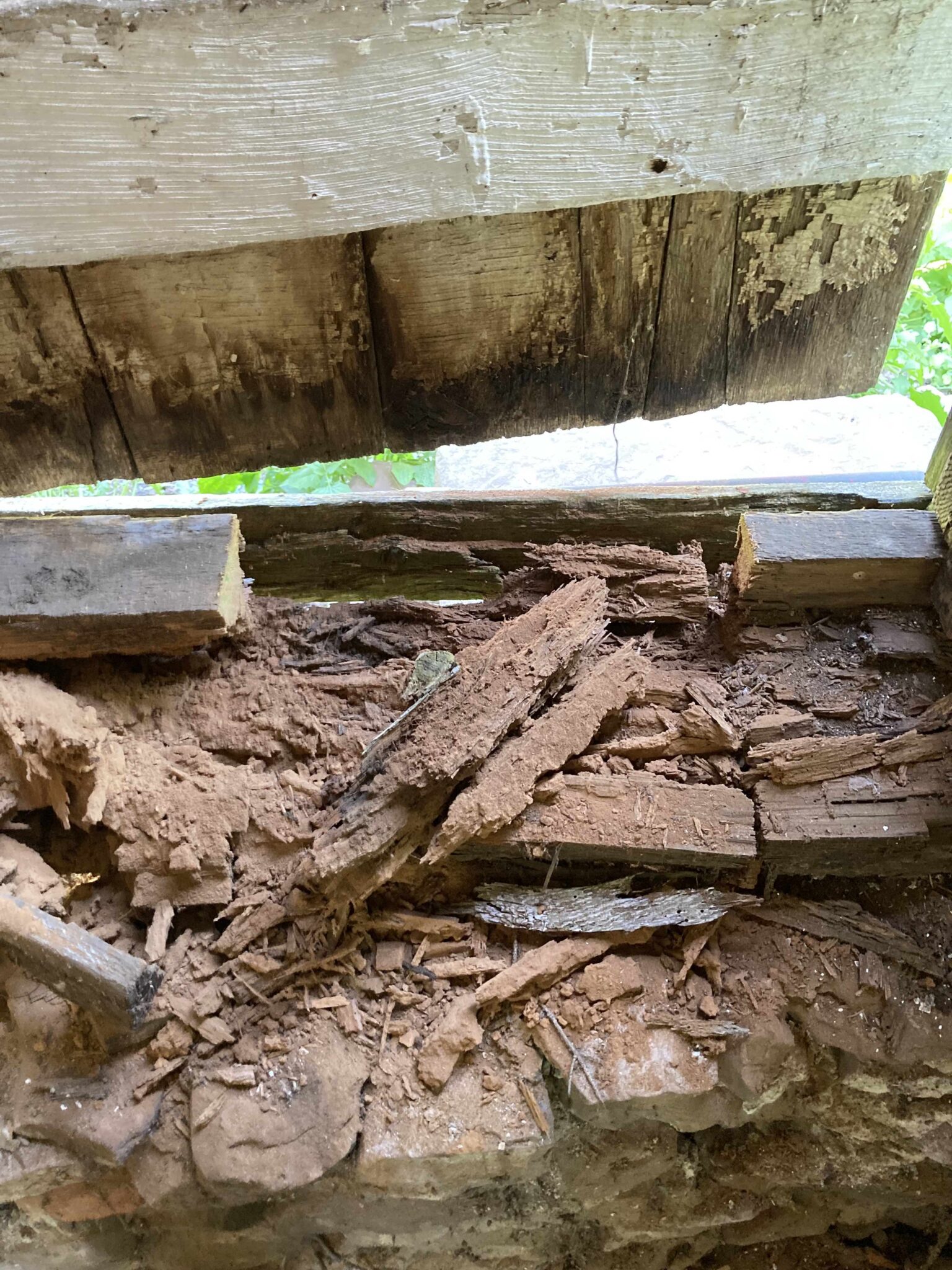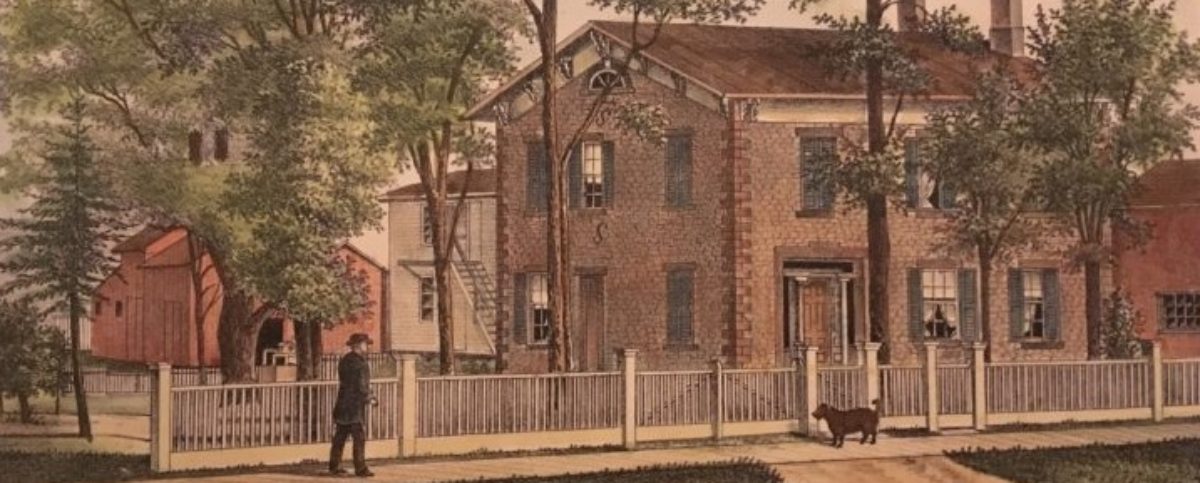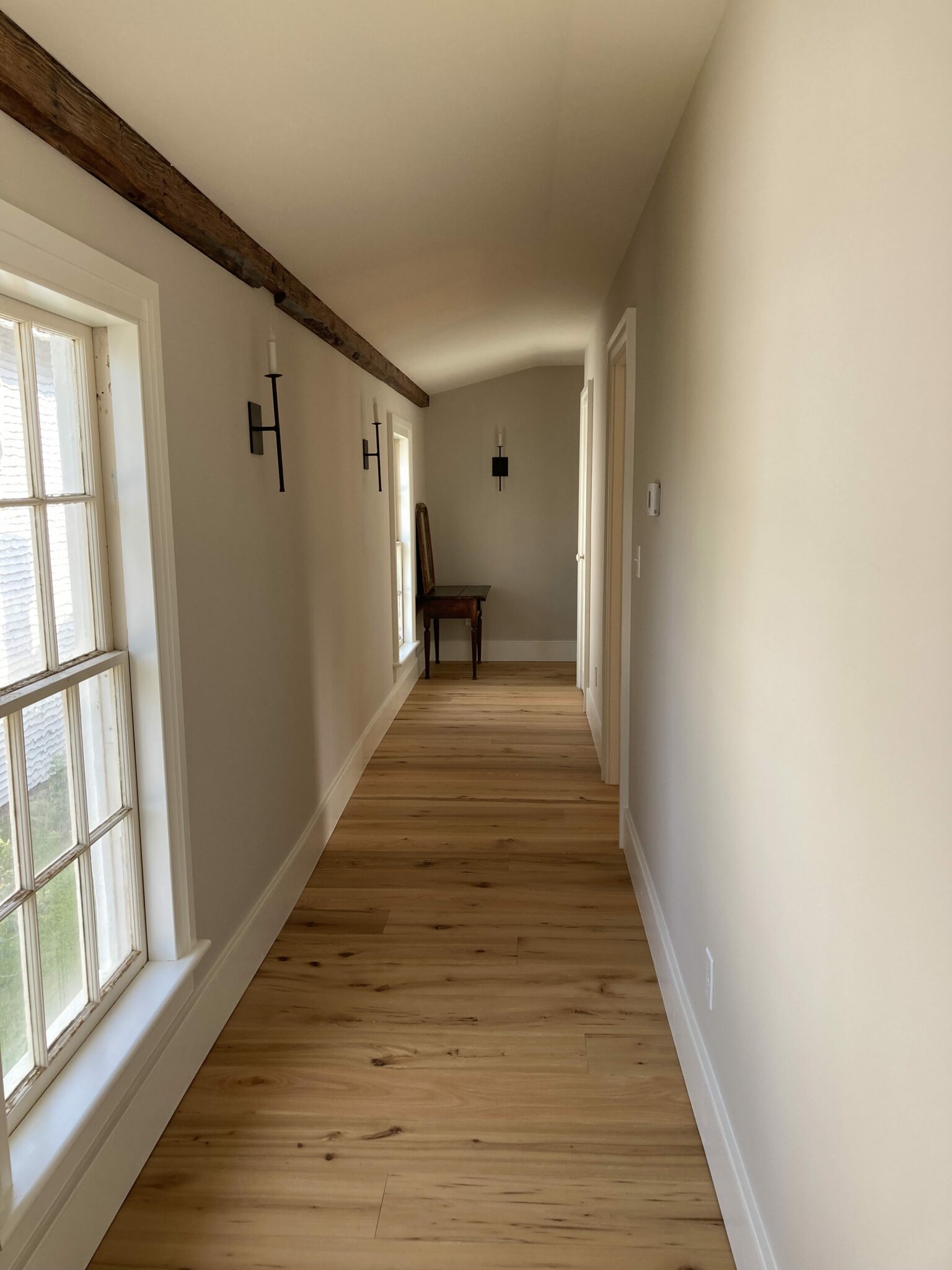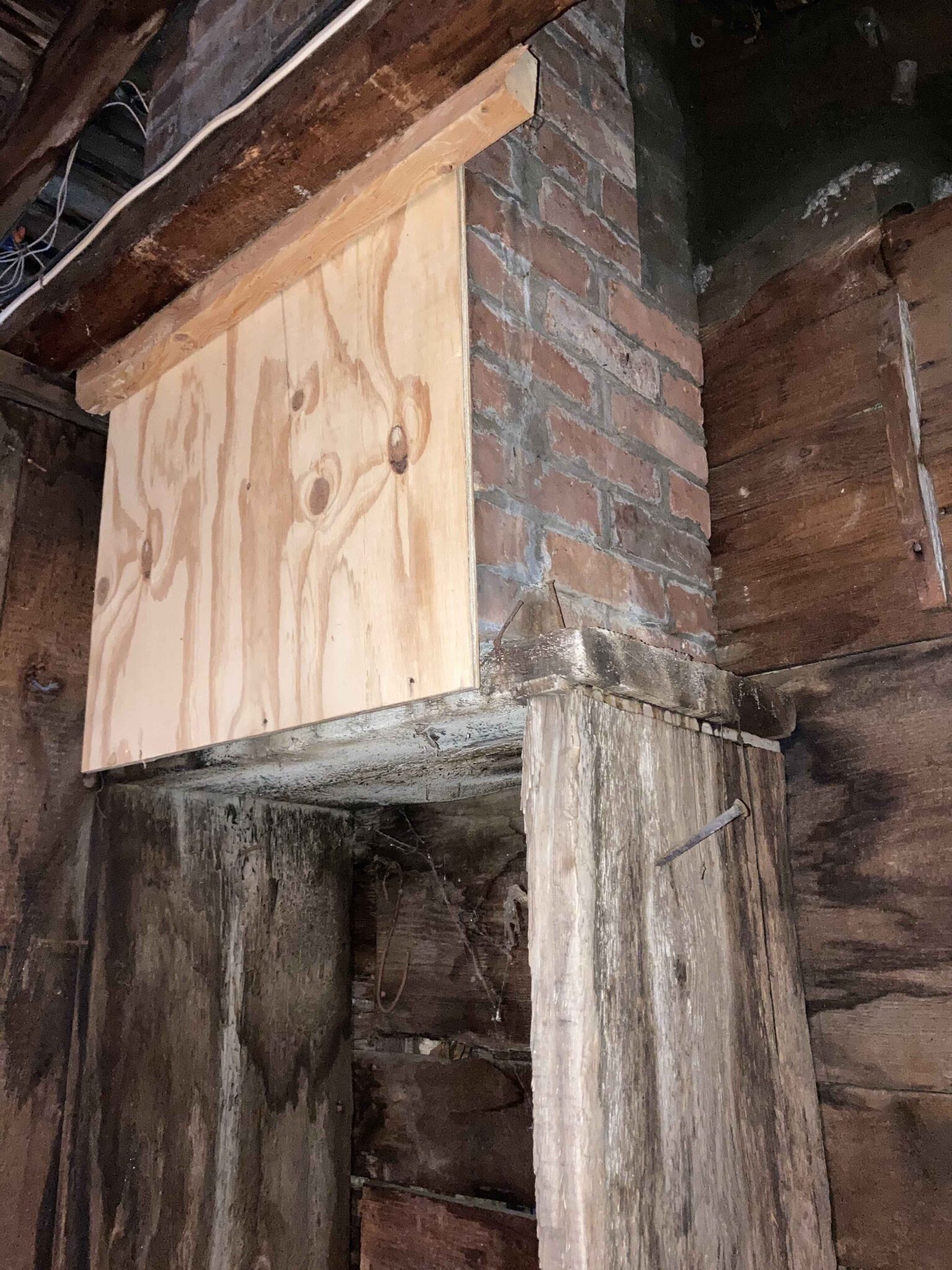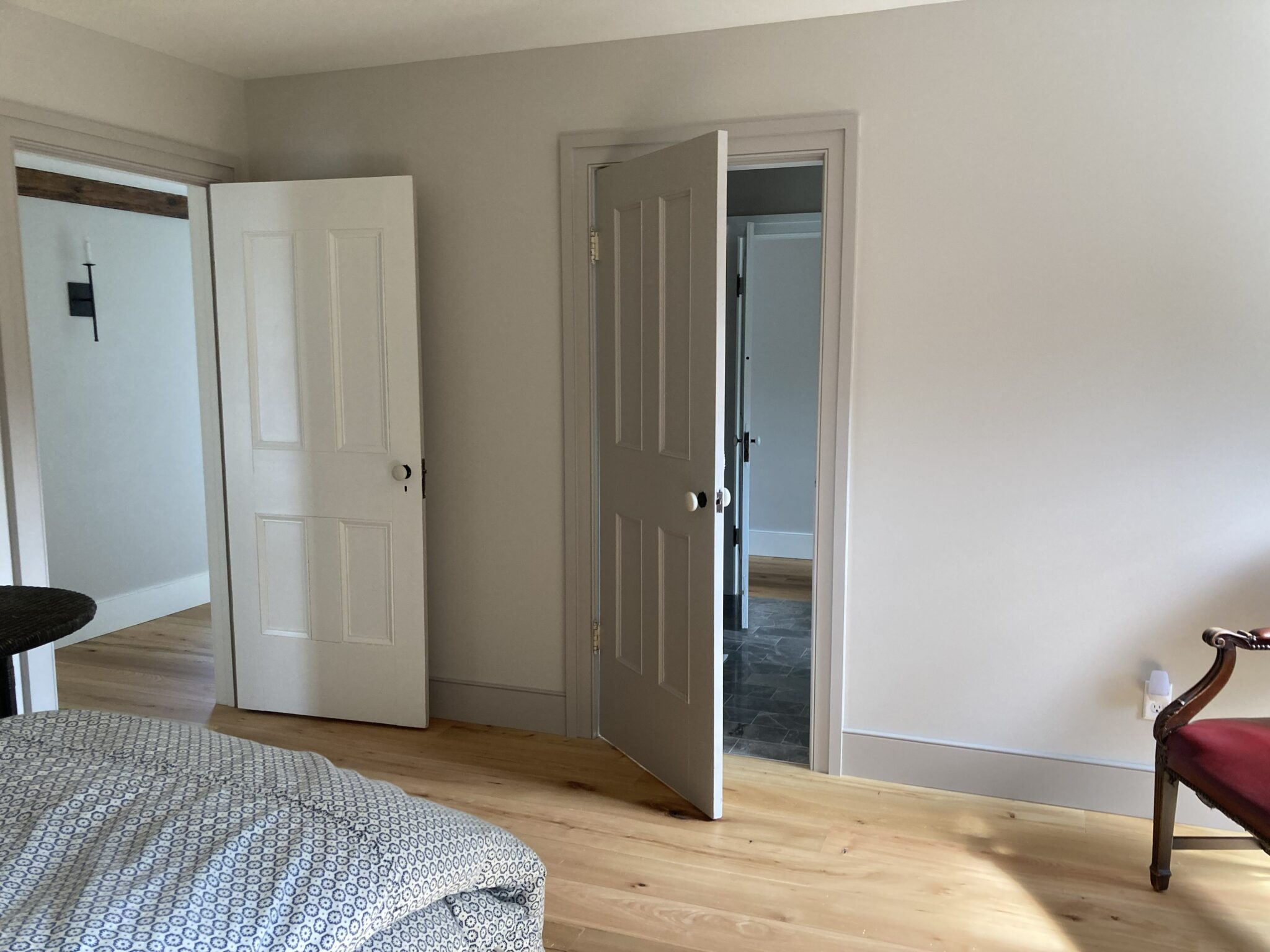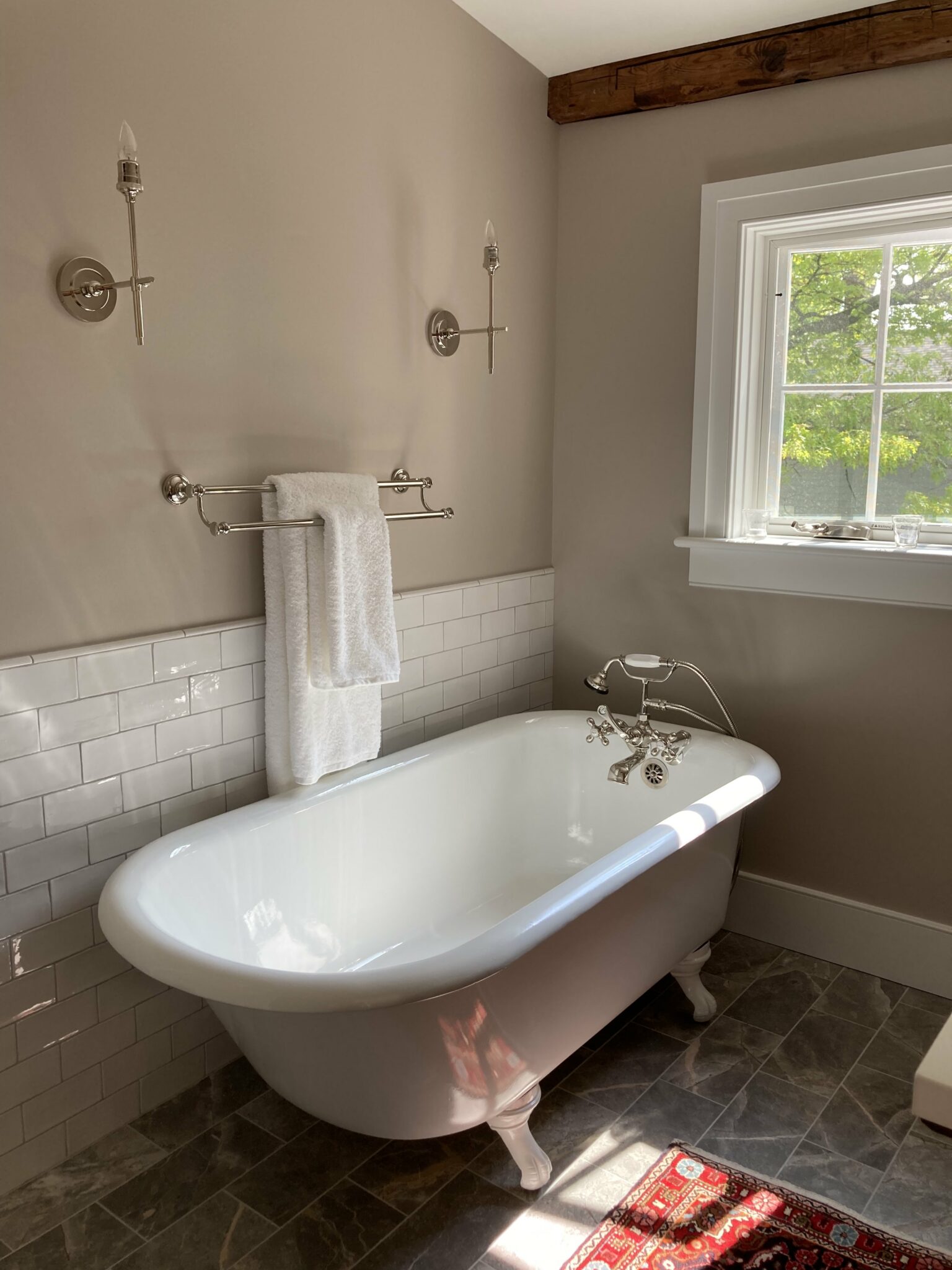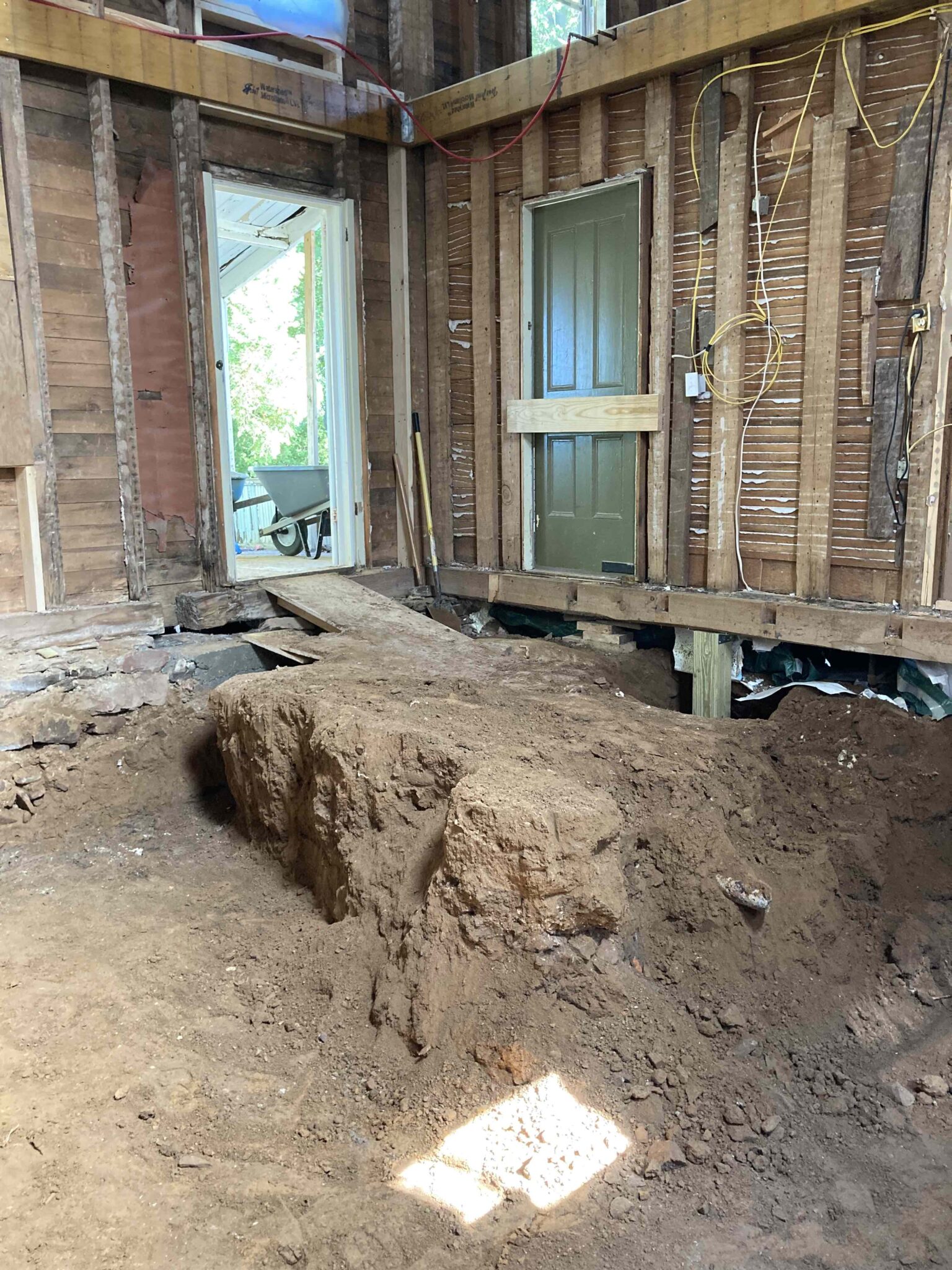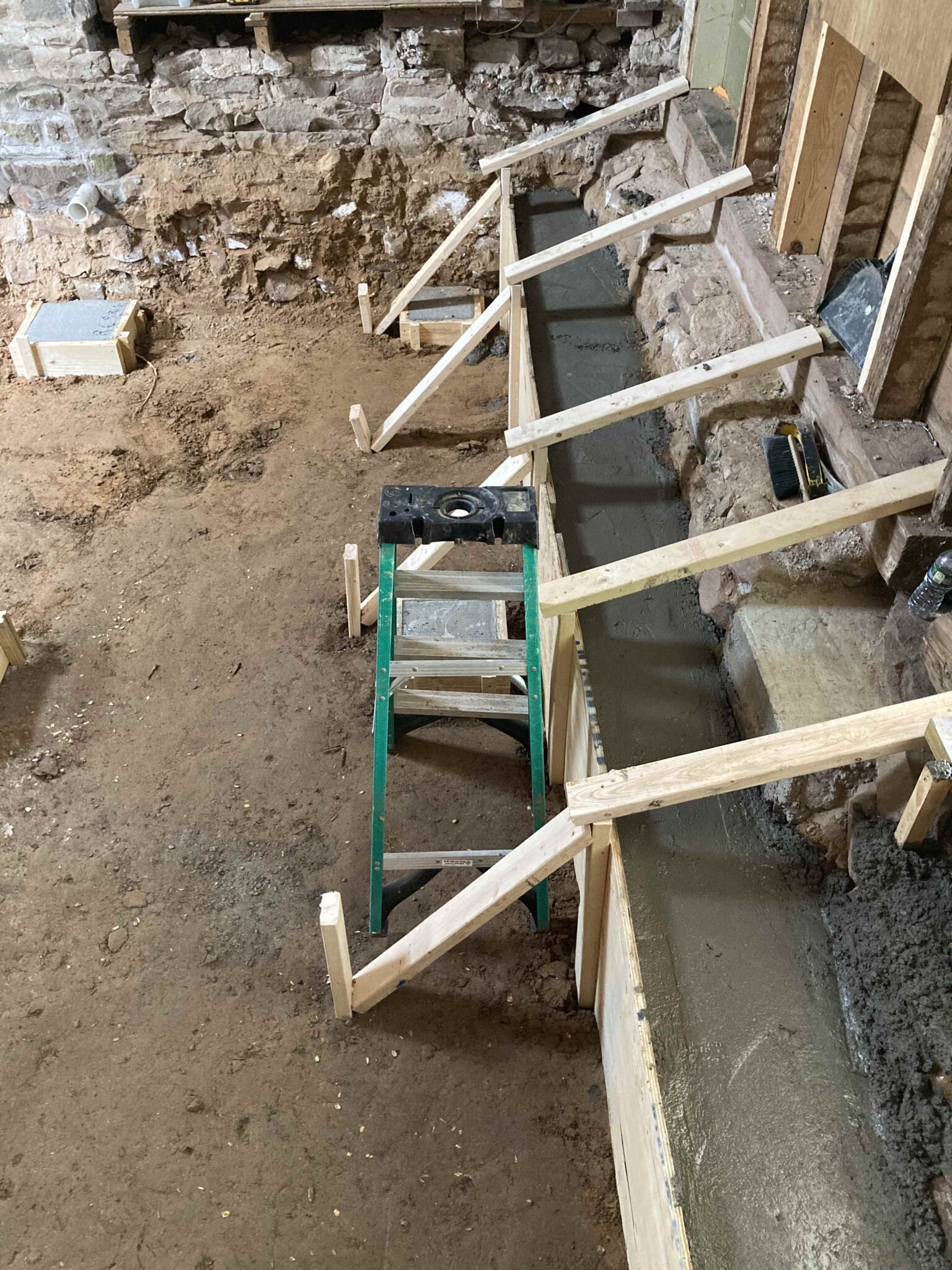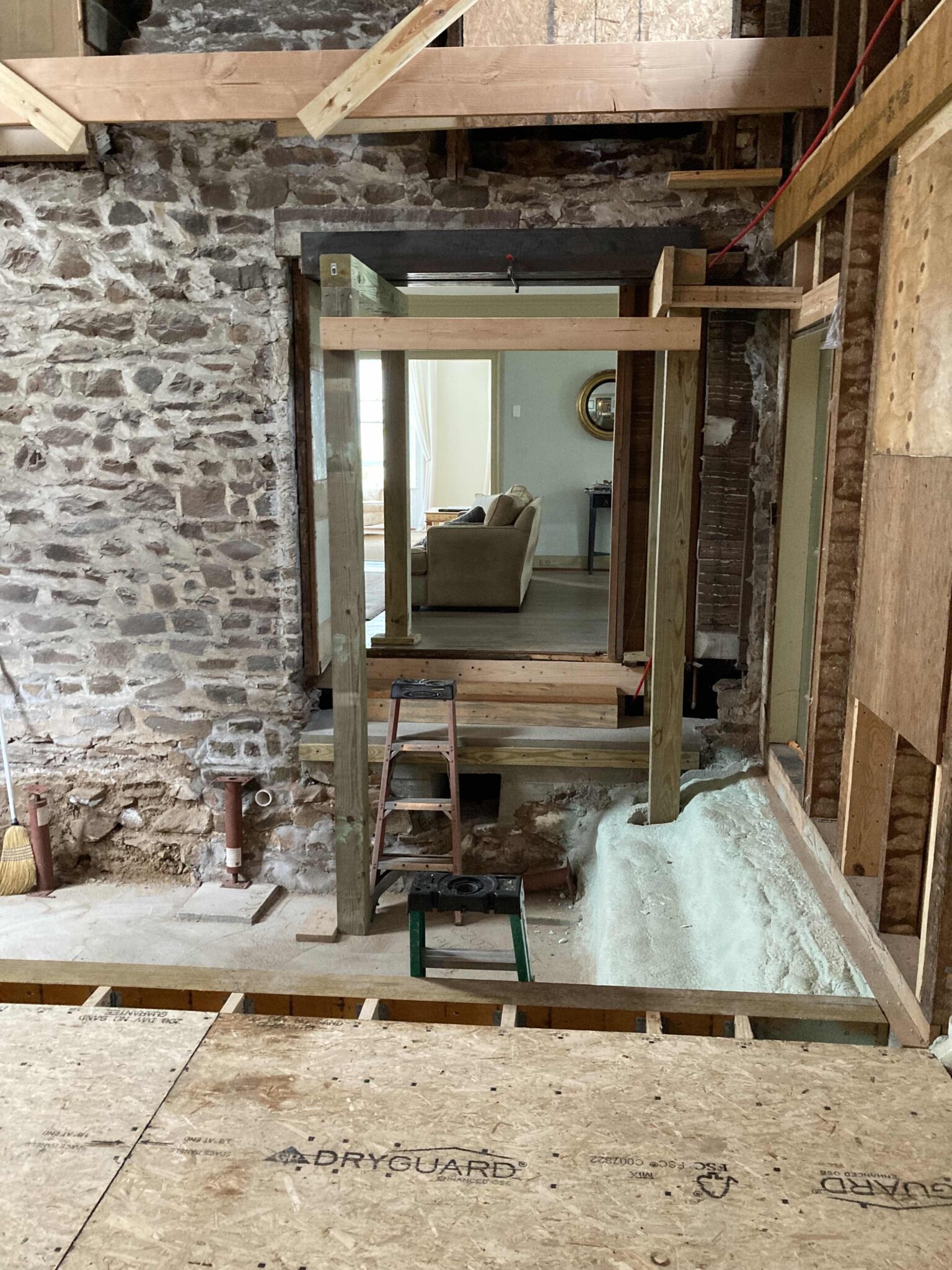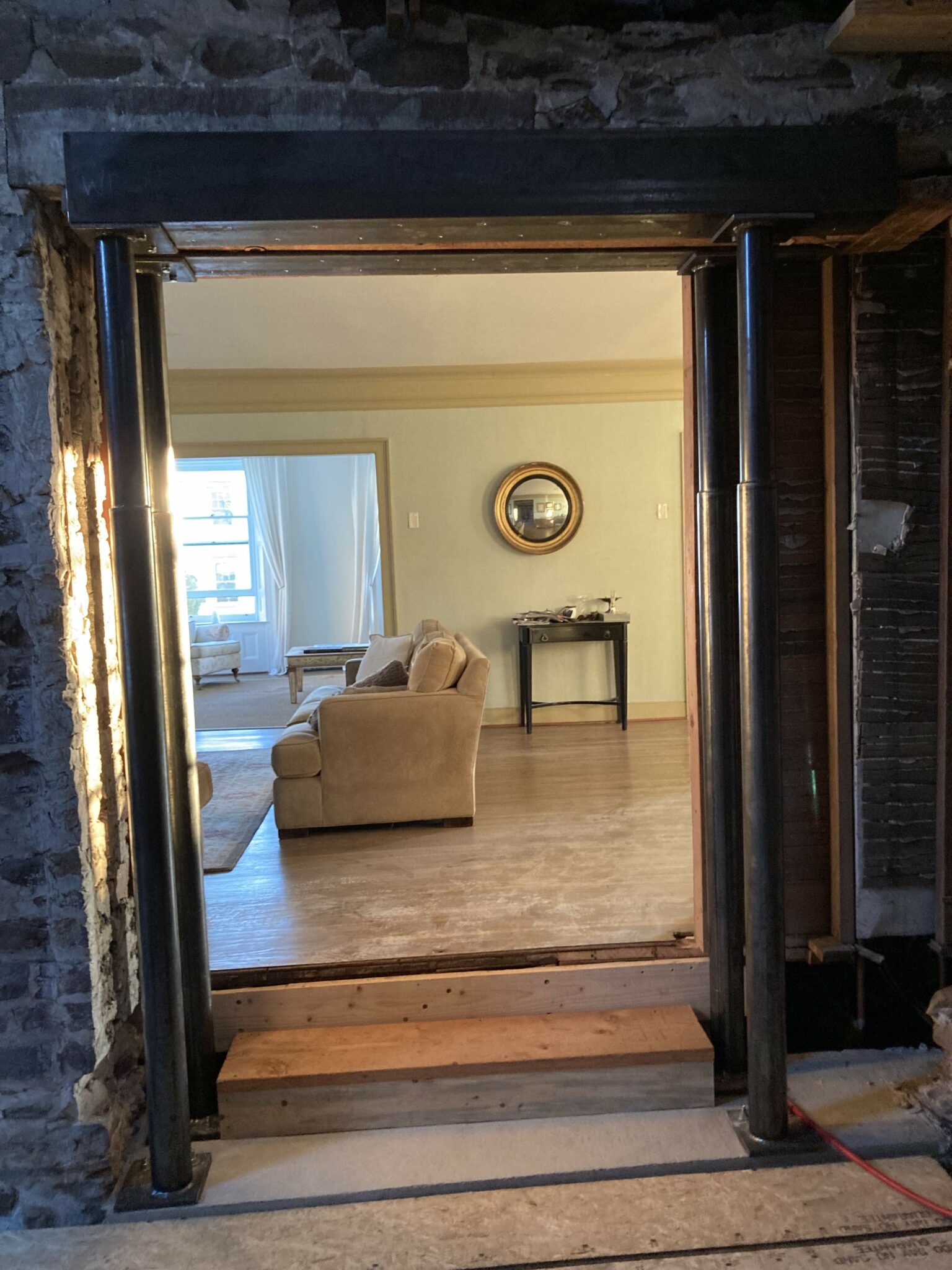We’ve spent five years working on the house so far, and all that time the barn out back has been slowly leaning and settling as the wooden sill plates rotted away. It’s time to turn to the other structure in the drawing at the top of this blog: the barn.
I’m currently contemplating the “straightening” step, and some recent research led me to River Road Ramblings, which had good detail confirming essentially what I had in mind. It also got me motivated enough to start catching up on progress with the barn so far. If you have an Instagram account, flachsreude will provide some real inspiration as they are starting with a larger, older house and barn in Germany with a lot more work to do.
Our barn has three sections in the old drawing, two of which are still standing. The shed roof off the back is gone, though we can still see where it was attached.
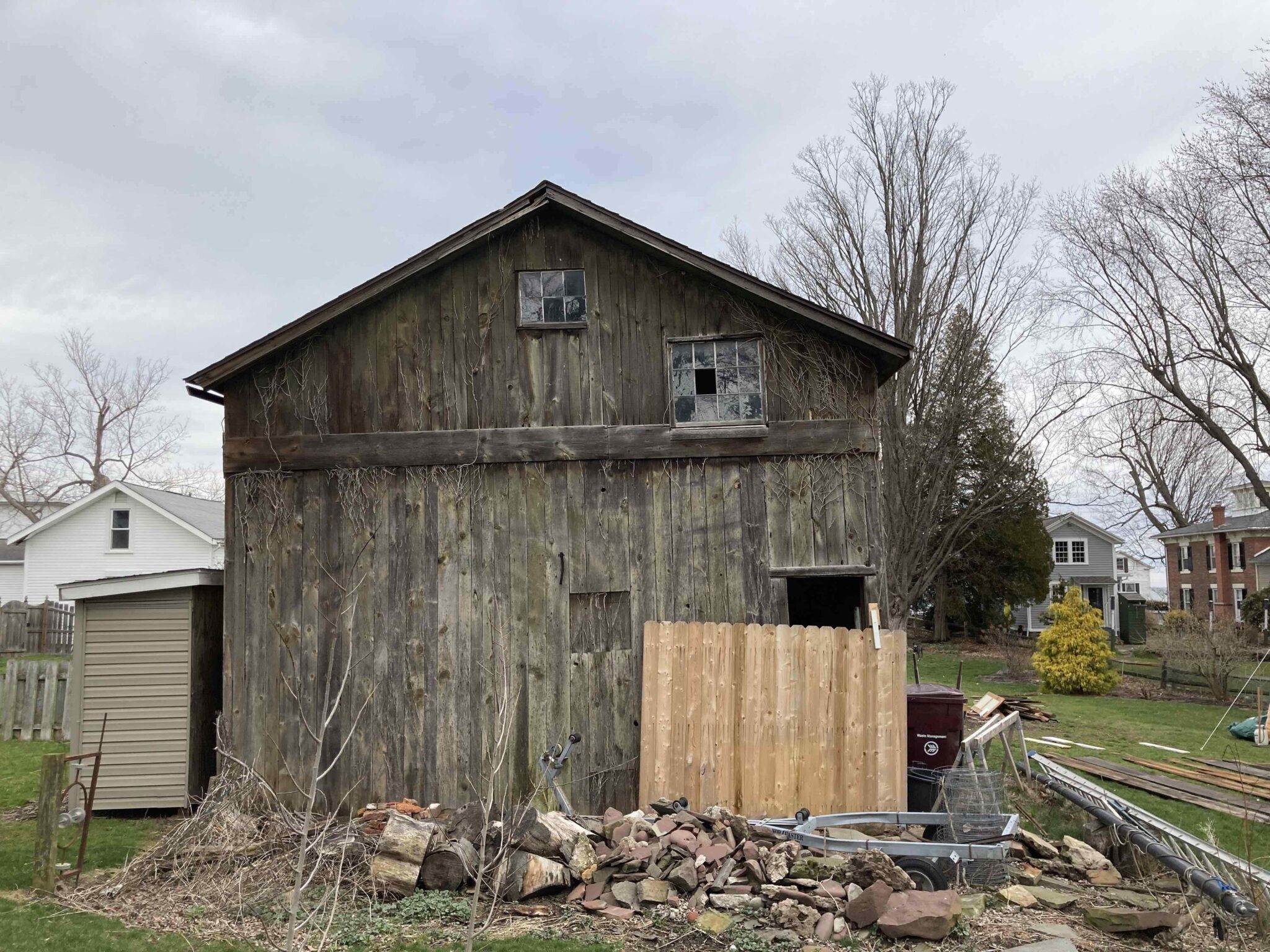
Some time before we bought the house, a tree fell on the barn roof in a storm, damaging the section closest to the house. That sat for some time, letting water in, but was eventually patched with a flat rubber roof and vinyl siding.

The combination of leaking roof and untreated wood sills resting on damp rock walls has taken a toll. The architect working on our house recommended removing and building new, but I’ve instead decided I could use another project… Besides, it has been here a while and was listed in the Pultneyville historic register application as a “contributing nineteenth-century frame barn”, so I’d like to try to save it. That, and I’m not sure how far down the list this would fall if we had to price out a whole new structure.
The damage is more apparent on the inside, where the rotted sill beams have led to settling and a noticeable lean to the building. The floor was wood over wooden joists. Judging by the dimensions of the joists, it looks like they were added in the 1950s or so, which pre-dated pressure treated lumber. Being so close to the wet dirt under the barn, they’ve mostly rotted away.
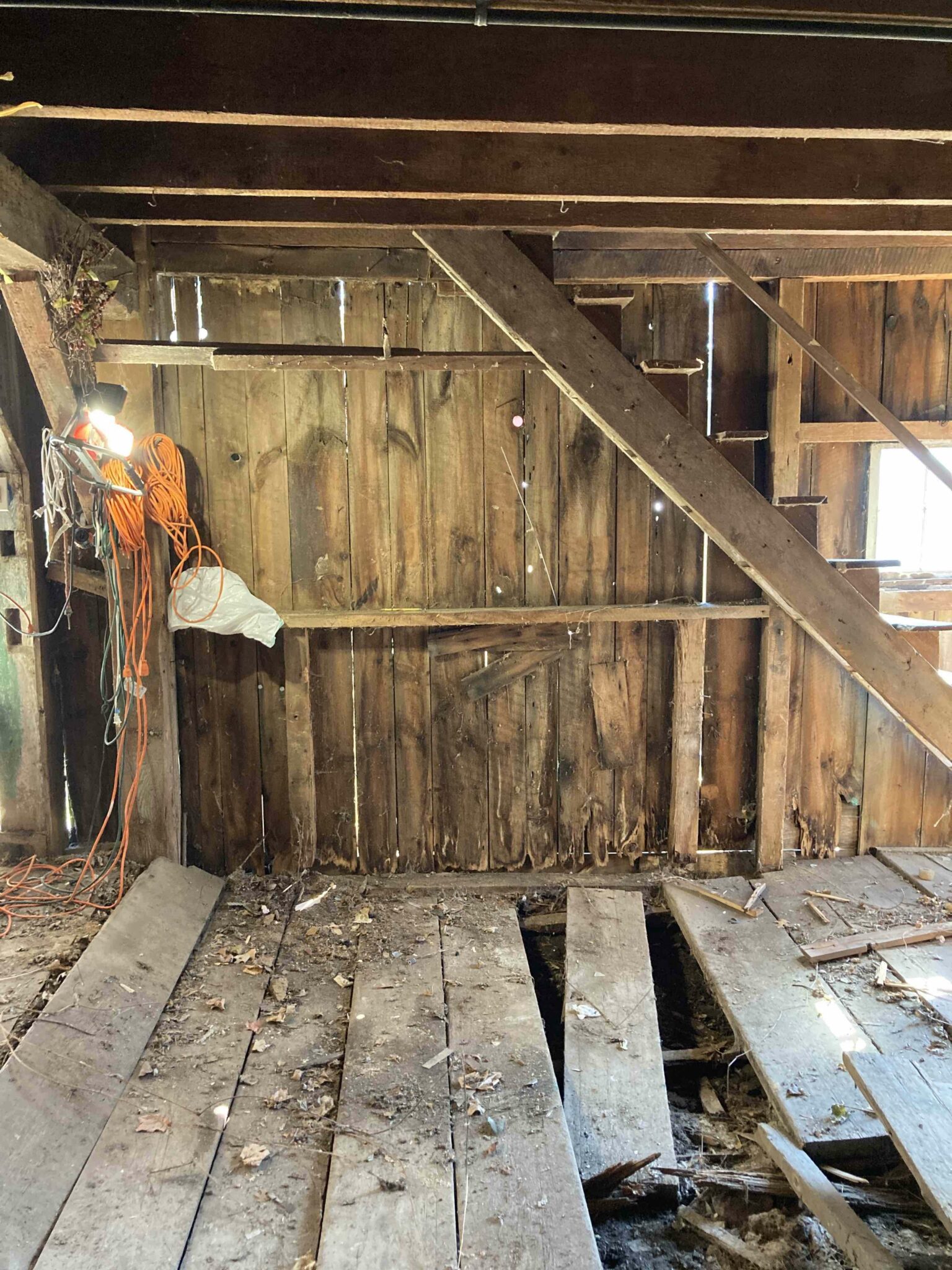

The first step, though, was removing the accumulation of stuff that barns collect.

Some of the material was from the house, so needed to be saved for potential reuse. Other items, like the wood stove shown above, had been in the barn since we moved in. Finally digging it out, we found it to be a less exciting model from 1975.
The wall holding up those house parts looked from the outside like it had been a second door, which was more clear once everything was moved out of the way.
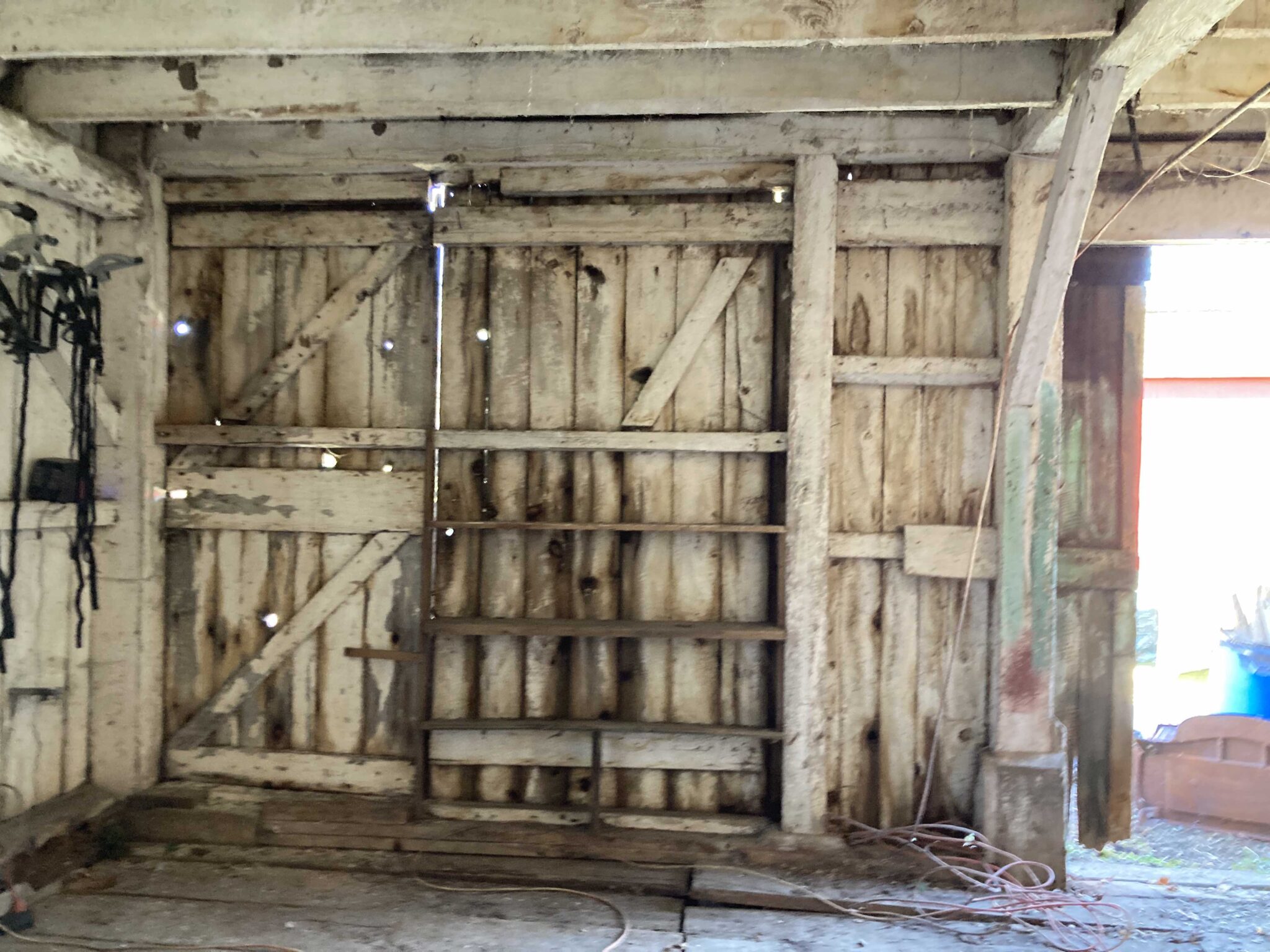
After cleaning out the north side of the barn, the “fun house” floor could be removed and the rotted floor joists taken to the dump. Now we could see more of what we had gotten ourselves into…

What’s left of floor joists and a sill beam from the south section of the barn.
